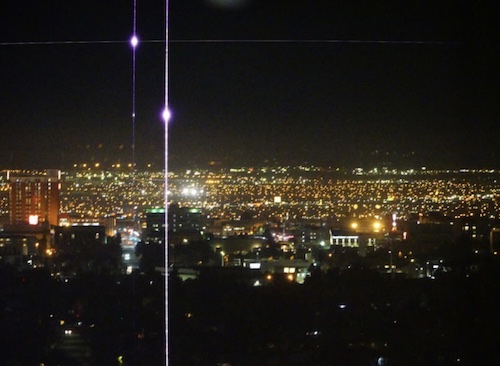Home
A comprehensive resource for safe and responsible laser use
US: Autonomous car lidar said to damage camera sensor
In early January 2019, a man attending the CES technology show in Las Vegas claimed his Sony A7RII camera's sensor was damaged by the lidar from a company called AEye. Jit Ray Chowdhury said all photos taken after he snapped pictures of the AEye functioning lidar had two purple spots with lines emanating from them:

AEye said that "cameras are up to 1000x more sensitive to lasers than eyeballs. Occasionally, this can cause thermal damage to a camera's focal plane array."
The company offered to replace Chowdhury's camera. Curiously, Chowdhury said he could not find the camera. As laser expert Jeff Hecht wrote, "without the camera it remains unknown what the nature of the damage was, when it occurred, and what caused it."
Companies using lidar for autonomous vehicles choose systems which are safe for human eyes. However, as the AEye incident indicates, some types of lidar may not be safe for camera sensors. These tend to be systems using pulses of laser light, rather than continuous laser light.
From Ars Technica (initial report) and IEEE Spectrum (additional information on lidar characteristics for eye and sensor safety).